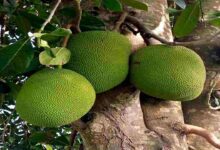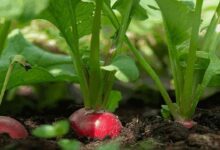Trichoderma is no less than a boon for crops, know its benefits
Trichoderma in Cultivation: A biological fungicide called Trichoderma is often used in agriculture to control fungal infections, particularly those that are soil-borne. This fungus, which is a member of the genus Trichoderma, is very efficient against a variety of diseases, including Sclerotium, Rhizoctonia, Pythium, and Fusarium. Its use lessens reliance on chemical fungicides, benefiting both human health and the environment.

Trichoderma’s mode of action
1. The presence of mycoparasites
Trichoderma uses all of the nutrients found in the pathogen’s mycelium to attack and kill the mycelium of harmful fungus.
2. Antibiotic production
To stop infections from growing, Trichoderma secretes compounds that resemble antibiotics.
3. Inhibition of Competition
Trichoderma spreads quickly and fights pathogens for nutrients and soil space.
4. Plant Resistance Rises
It increases a plant’s capacity to fend off pathogens by triggering its resistance mechanism.
Techniques for Using Trichoderma
1. Trichoderma Seed Treatment
The purpose of seed treatment is to shield the crop against early-stage illnesses.
Trichoderma Seed Treatment Method: Combine 1 kg of seeds with 5–10 g of Trichoderma powder. After drying in the shade, use the seeds right away for planting.
Benefits of Trichoderma Seed Treatment: It controls a variety of soil-borne and seed-borne illnesses, including root rot and damping off.
2. Trichoderma Soil Treatment
Trichoderma is used to manage soil-borne infections.
Trichoderma soil treatment method: Mix 5 kg of Trichoderma powder with 100–200 kg of vermicompost or rotting cow dung manure. For seven to ten days, keep this combination in a shaded area, keeping it wet occasionally. While plowing the field, thoroughly mix it into the soil.
Trichoderma soil treatment has the dual benefits of strengthening plant roots and controlling soil pathogens.
3. Trichoderma’s use in nurseries
In the nursery, Trichoderma is employed to shield crops against illnesses.
Trichoderma is used in nurseries by combining organic fertilizer with Trichoderma in the soil. Mix 10 grams of Trichoderma with 1 liter of water and dip the plant roots for 30 minutes. Trichoderma has the advantage of shielding nursery plants against a variety of soil-borne illnesses.
4. Misting a standing crop with Trichoderma
Spraying Trichoderma may be useful if the crop exhibits disease signs, but its use is restricted.
To apply Trichoderma to a standing crop, combine 5–10 grams of powdered Trichoderma with 1 liter of water. Apply this mixture to the affected areas.
Trichoderma spraying on standing crops has the advantages of lowering disease outbreaks and accelerating plant development.
5. Using irrigation water and Trichoderma
Trichoderma may be incorporated into irrigation water and applied to plant roots.
To use Trichoderma with irrigation water, combine 200 liters of water with 1 kilogram of Trichoderma powder. Use drip irrigation or flood irrigation to apply it on the field.
Using Trichoderma with irrigation water has the advantage of controlling infections near the roots.
Things to watch out for while using Trichoderma
- Trichoderma’s spores may be killed by direct sunshine; therefore, always utilize it in a shaded area.
- Avoid using it in combination with chemical fungicides.
- Choose a high-grade Trichoderma product.
- Its effectiveness is increased when combined with cow dung or organic manure.
Advantages of Trichoderma
- Eco-friendly: Less chemicals are used.
- Sustainable agriculture preserves biodiversity and soil fertility.
- Disease control: Good in controlling a lot of fungal illnesses.
- Cheap: less expensive and environmentally friendly than chemical fungicides.

